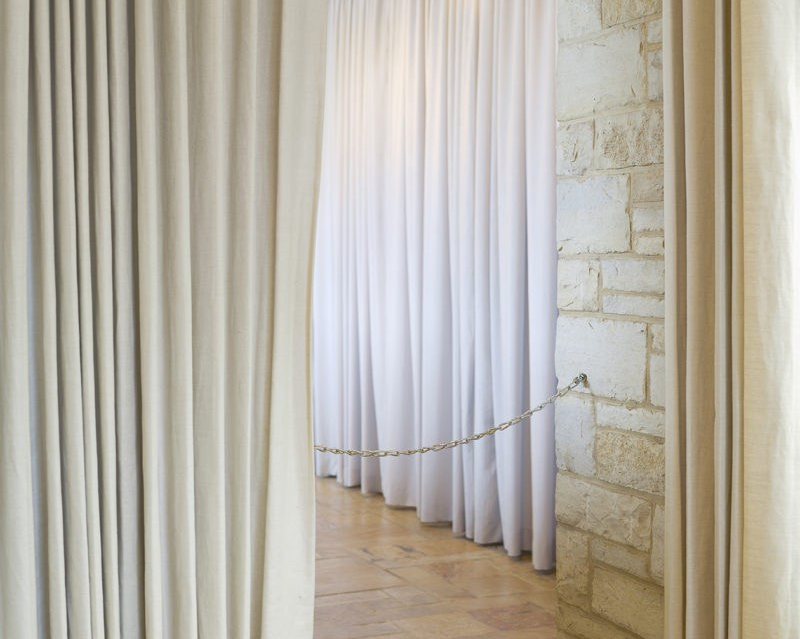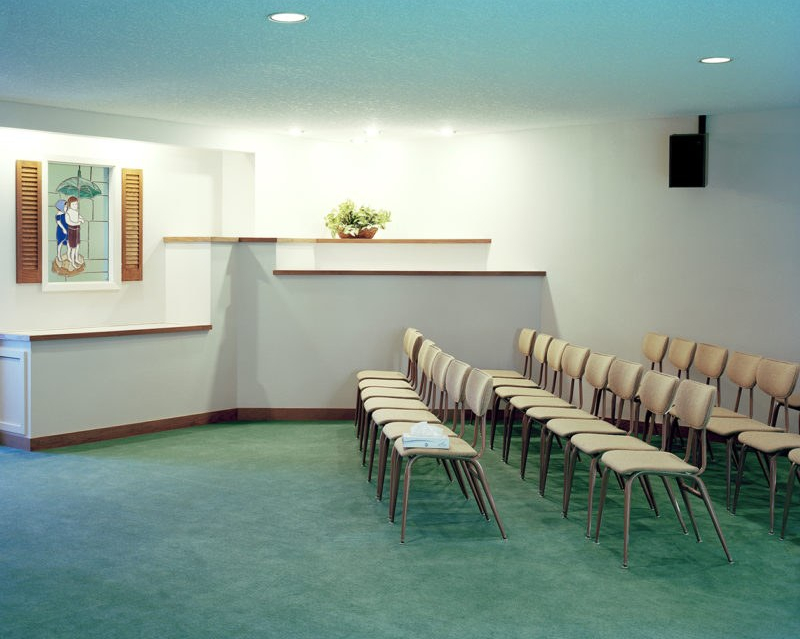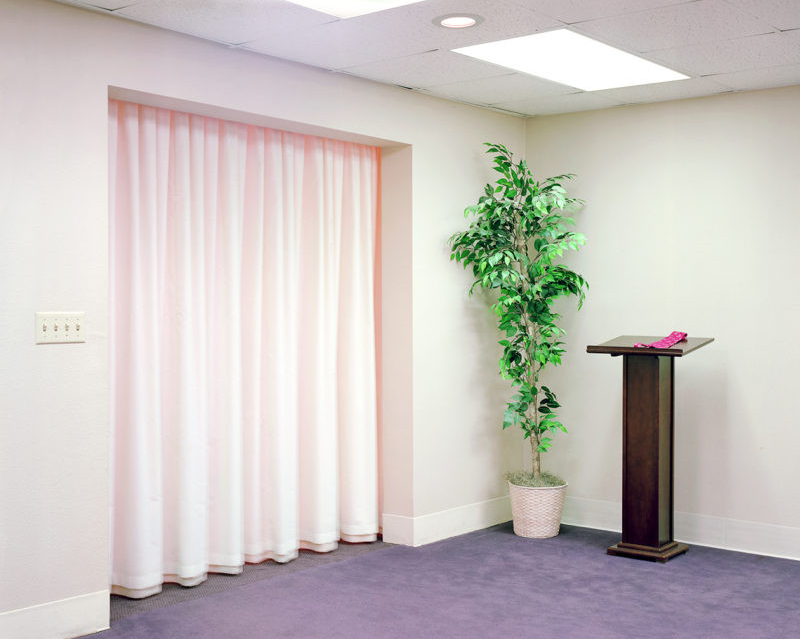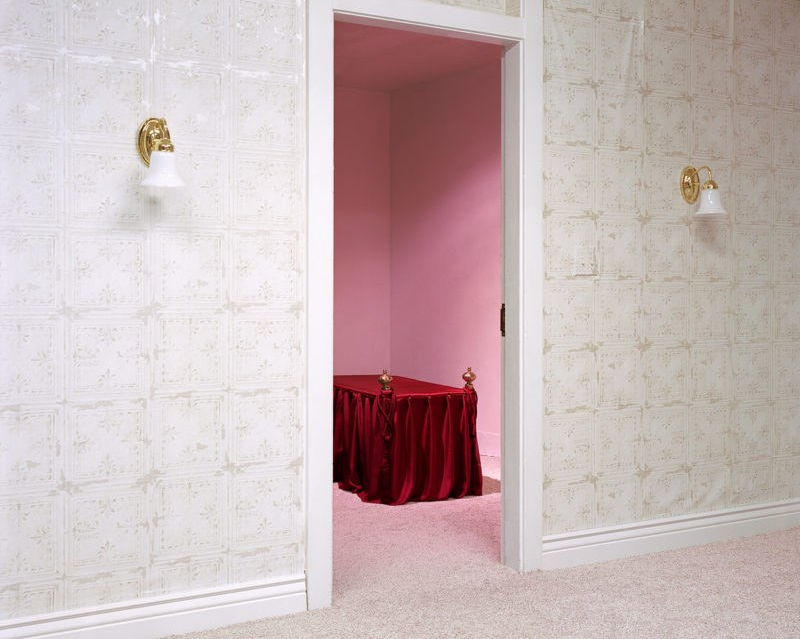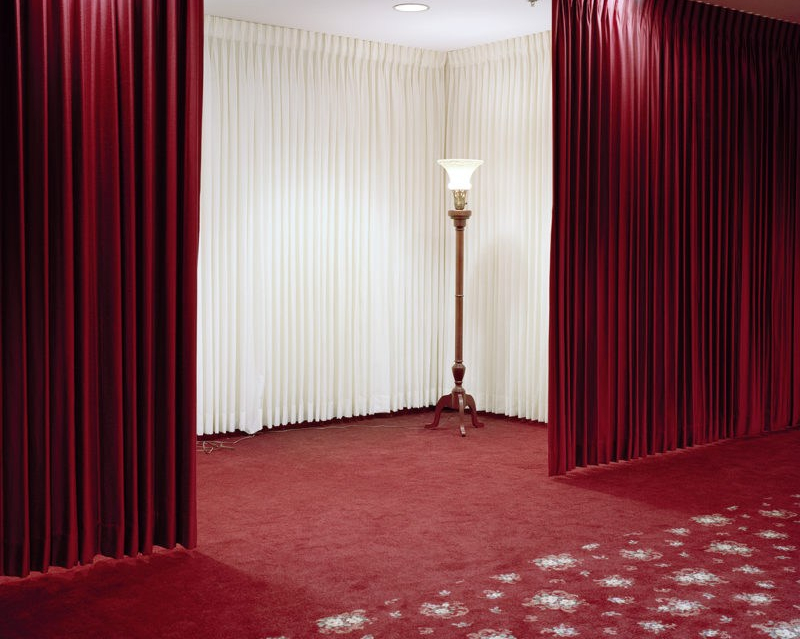Rachel Cox | Mors Scena
August 19, 2020
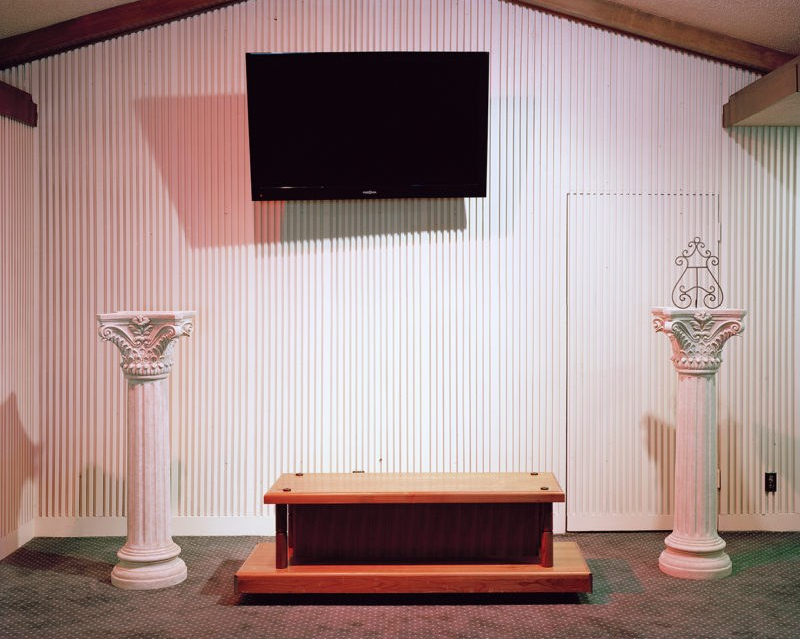
I have always found it interesting to observe how buildings and interior spaces are designed to create a specific emotional state for their inhabitants. The first artist to really open my eyes to this was Richard Ross in his book “Architecture of Authority.” These images examine a broad scope of institutions such as prisons, churches, schools and courtrooms from around the world. Ross depicts how architectural design can be used to exert power over the individual.
Rachel Cox starts with a similar premise; she takes us into the hushed rooms of funeral homes to explore where the business of grief is done. However, Cox does not just document these quarters as she finds them, she also rearranges objects and furniture as she photographs. In this way, the viewer cannot be certain if what they are seeing is the original staging in the space or Cox’s.
Cox’s images are strange. The light has a stark, brittle quality to it. In her images there is a constant tension between what she allows us to see and what is hidden from sight. She often places the viewer at the entryway of a room, so we can just peek in, but not see the whole thing. She also uses the maze-like layering of curtains to obscure or reveal parts of the space. The effect is unsettling; as if one never knows what is obscured from sight just around the corner.
These images also have the uncanny resemblance of a film set. The way the lights and the curtains are used to put the content of the rooms on display echoes the manner in which one would construct a production on a theater stage. The furniture comes across more as props for setting a scene rather than actual functional objects.
More than anything, I love the questions that this body of work prompts- if these spaces are made specifically to house grief, what does that say about how we grieve as a culture? It has been especially interesting to look at this project under the current conditions. Because of the pandemic, many have experienced an extreme narrowing of the physical footprint that house the activities of living. We no longer have the same access to restaurants, gyms, places of worship, or even municipal buildings. Instead of being able to use spaces designed for one particular purpose, everything is collapsed into one place. It gives a new perspective on the effect that the spaces we inhabit have on our lives.
– Mia
View more here.
